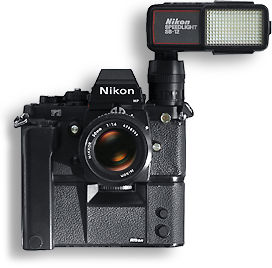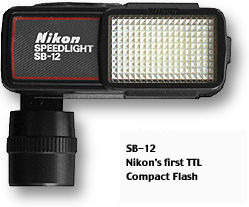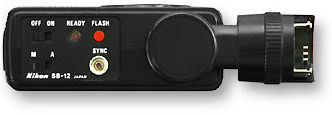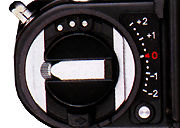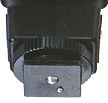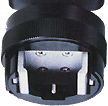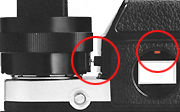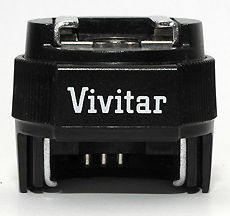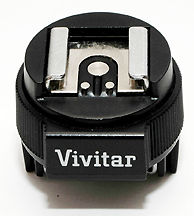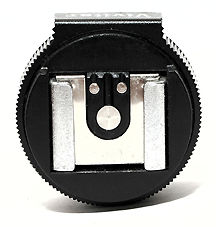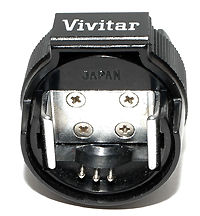I
am quite convinced the designer for the earlier AS-7 flash coupler for the Nikon
F3 has been demoted to a nonproductive department in Nikon.
Those decision makers
who have been sleeping for the last twenty
years eventually
woke up and took a big yawn and said "Oh... I have forgotten to announce this
good news 20 years ago - ..Nikon is hereby pleased to announce the debut of an innovative
Nikon Flash Unit Coupler AS-17 specially designed for the Nikon F3
cameras. This unit gives photographers TTL flash control capability for the F3 even
when used with all Nikon TTL Speedlights that have an ISO-type flash mounting foot
(i.e. the SB-28, SB-27, etc.)...".
|
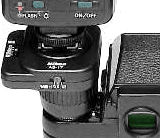
|
To me, Nikon's decision
is something like realizing they have made a big mistake on the F3's accessory shoe
design (They have to maintain two production lines for flash units that has a special
flash module for F3 and another big group with the standard ISO accessory shoe for
the last 2 decades (You will find the AS-8 for the SB-16A) and another SB-17 which
essentially was a replica of the SB-15 that has long been discontinued. All these
added up to indicate that the SB-16A and SB-17's days could be numbered from now
- AFTER a sensible commercial decision for Nikon.
AN UPDATE for flash
section: Mr
Andrew Kalman has Some
detailed explanation
to Nikon's miserable Flash Shoe issue. It deserves a good read to understand WHY
but as I am NOT a service technician and I
have no way to confirm whether what Mr Andrew has clarified is correct or not -
but I am publishing it here for all to consume.
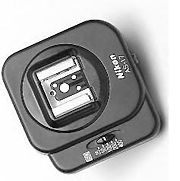 |
Well, that was
not bad news after all, because the Nikon F3 can virtually use any Nikon made flash
units which include the current AF models but why I felt so upset is, since those
guys can resolve the F3's handling problem with flash with the AS-7, why couldn't
there be something like the AS-17 that comes 20 years later ? Anyway, if such a simple
65g device could take 20 years of research to materialize, well ?
Credit: Dan Coogan from
Coogan Photographic / Phoenix, AZ <http://www.CooganPhoto.com> for resolving
a series of broken links to the AF SB800 sections in these pages.
|
... that was also a
sensible business decision for Nikon, but at the expense of consumers' benefits (because
anyone who broke, spoilt, got stolen their flash gun(s) for the F3 has to 'contribute'
some money to Nikon by buying a brand new AF flash, which currently they would only
intend to retain in their production line after the debut of the great little AS-17
here, after a span of twenty years..). Hey, what am I going to do with
my AS-8 and AS-9 now ?...
Highlights:
Flash unit coupler
for the Nikon F3 • Connects Speedlights with standard ISO-type mounting foot to the
F3 • Enables TTL flash control with Nikon TTL Speedlights, including the SB-28 •
Ratable hot shoe
Specifications:
Main function:
Enables F3-type TTL control with ISO-type Speedlight units
Compatible cameras: F3-series cameras
Compatible Speedlights: SB-15, 16B, 18, 20, 21B, 22, 22s, 23, 24, 25, 26,
27, 28, 21s; plus SB-11, 14 or 140 with SC-23 attached
Film speed range: ISO 25, 50, 100, 200, 400 (ISO 25 + 1/3 EV and ISO 400 -1/3
EV are possible)
Exposure compensation: -1/3, 0, +1/3 EV
Hot shoe rotation: Clockwise: 0 to 90 degree; Counter clockwise: 0 to 270
degree
Dimensions (W x H x D): 57 x 46.1 x 54.6mm
Weight (without batteries): Approx. 65g
<<<--- Credit: Images of these Nikon F3-Vivitar flash
coupler courtesy of Mr. Hannu Ylioja| Contact|) . Images
copyright © 2005 All rights reserved. Please respect the visual property of
the respective contributing photographers.
